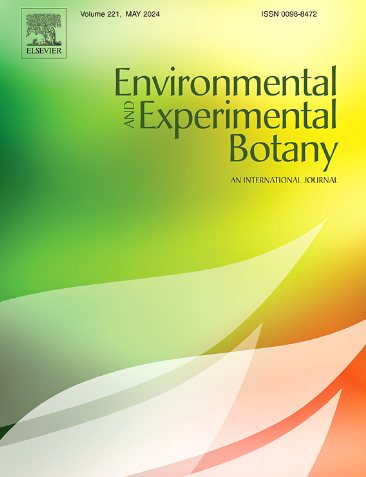根系K+和Ca2+转运体对H2O2敏感性的基因型差异解释了小麦和大麦耐盐性的差异
IF 4.7
2区 生物学
Q2 ENVIRONMENTAL SCIENCES
引用次数: 0
摘要
小麦和大麦是世界上重要的主食,但它们的生长和产量受到土壤盐度的严重影响,这促使人们需要恢复驯化过程中失去的抗逆性,以实现当前气候情景下的粮食安全目标。这一过程的瓶颈是植物表型。在过去的几十年里,植物耐盐表型分析主要是由高通量筛选的需求驱动的,并且通过提倡各种非破坏性和/或分析方法,将重点放在整个植物水平的性状上。这种方法虽然对评估盐度胁迫下植物的整体表现有用,但无法解释组织和细胞特异性的作用机制,因此缺乏预测能力。在这项工作中,我们提出并验证了一种通过测量h2o2诱导的成熟根表皮的K+和Ca2+通量响应来分型谷物耐盐胁迫的新方法。通过筛选44个大麦、20个硬粒小麦和20个面包小麦材料,我们发现耐受性基因型降低了阳离子(Na+、K+和Ca2+)渗透离子通道对ROS的敏感性,并认为这种脱敏可能允许植物以细胞和组织特异性的方式有效调节其离子稳态,而不会影响应激诱导的下游目标的ROS信号,从而达到转录调节的目的。这个基于细胞的表型平台在幼苗(4 d龄)上进行,为育种者提供了一种针对新的(以前未探索过的)性状的可能性,并可能有助于育种者在未来的育种计划中设计耐盐性。本文章由计算机程序翻译,如有差异,请以英文原文为准。
Genotypic variations in sensitivity of root K+ and Ca2+ transporters to H2O2 explains differential salt tolerance in wheat and barley
Wheat and barley are known as important staple food worldwide, but their growth and yield are severely affected by soil salinity, prompting a need for regaining their stress tolerance lost during domestication, to meet food security targets under current climate scenarios. The bottle neck in this process is plant phenotyping. In the past decades, approach to plant phenotyping for salinity stress tolerance was predominantly driven by the need for a high throughput screening and focused on the whole-plant level traits by advocating various non-destructive and/or analytical methods. This approach, though useful for assessing overall plant performance under salinity stress, fails to account for tissue- and cell-specific operation of contributing mechanisms and, as a result, lack the predictive power. In this work, we propose and validate a new approach for phenotyping cereal crops for salinity stress tolerance by measuring H2O2-induced K+ and Ca2+ flux responses from mature root epidermis. By screening 44 barley, 20 durum and 20 bread wheat accessions, we show that tolerant genotypes reduce sensitivity of cation (Na+, K+ and Ca2+) permeable ion channels to ROS and argue that such desensitization may allow plants to efficiently regulate its ionic homeostasis in a cell- and tissue-specific manner, without compromising stress-induced ROS signaling to downstream targets, for transcriptional regulation purposes. Being conducted on young (4-d old) seedlings, this cell-based phenotyping platform offer breeders a possibility to target new (previously unexplored) traits and may be instrumental for assisting breeders in engineering salinity stress tolerance in future breeding programs.
求助全文
通过发布文献求助,成功后即可免费获取论文全文。
去求助
来源期刊

Environmental and Experimental Botany
环境科学-环境科学
CiteScore
9.30
自引率
5.30%
发文量
342
审稿时长
26 days
期刊介绍:
Environmental and Experimental Botany (EEB) publishes research papers on the physical, chemical, biological, molecular mechanisms and processes involved in the responses of plants to their environment.
In addition to research papers, the journal includes review articles. Submission is in agreement with the Editors-in-Chief.
The Journal also publishes special issues which are built by invited guest editors and are related to the main themes of EEB.
The areas covered by the Journal include:
(1) Responses of plants to heavy metals and pollutants
(2) Plant/water interactions (salinity, drought, flooding)
(3) Responses of plants to radiations ranging from UV-B to infrared
(4) Plant/atmosphere relations (ozone, CO2 , temperature)
(5) Global change impacts on plant ecophysiology
(6) Biotic interactions involving environmental factors.
 求助内容:
求助内容: 应助结果提醒方式:
应助结果提醒方式:


